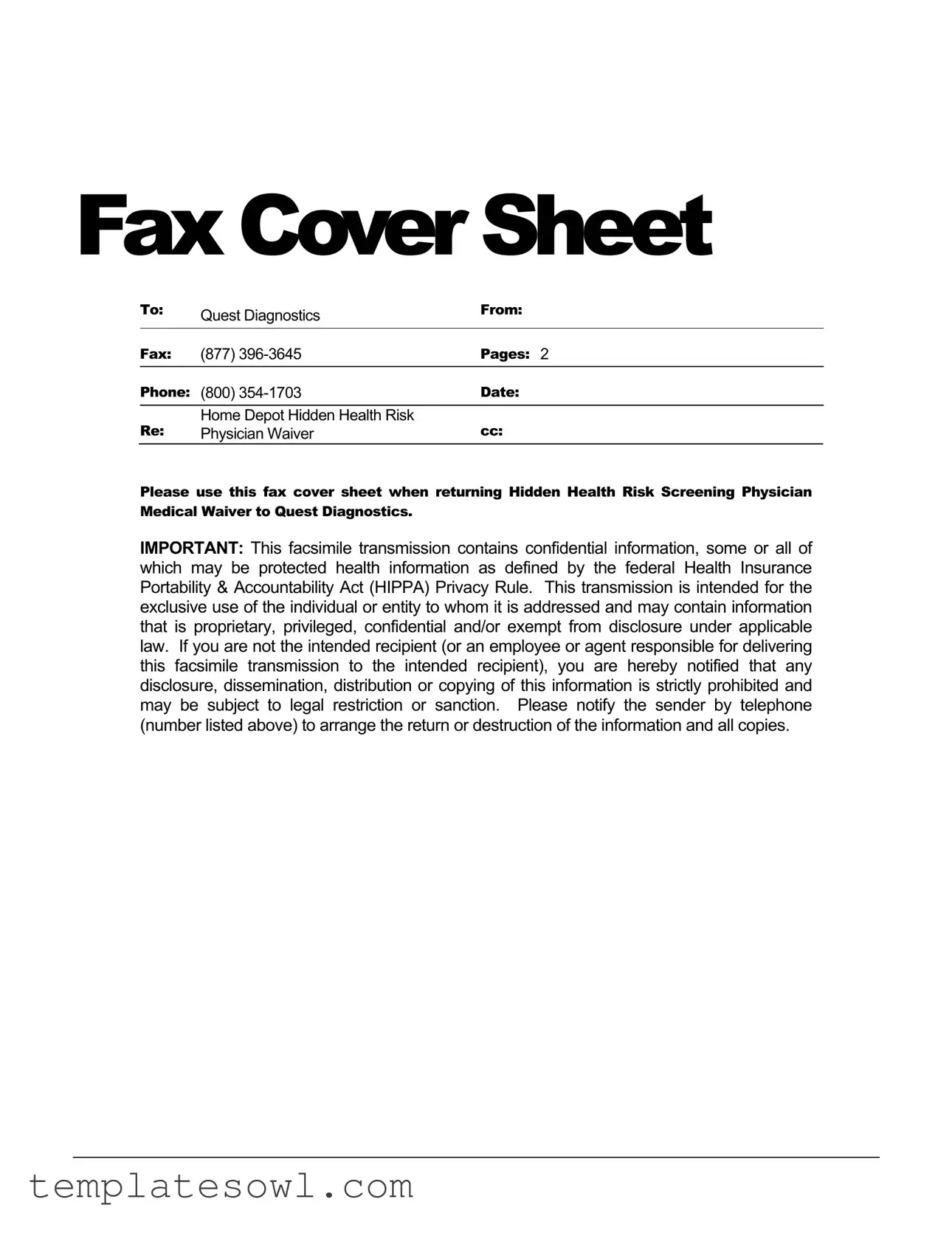What is a Fax Cover Sheet and why is it important?
A Fax Cover Sheet is a document that accompanies a fax transmission. Its primary purpose is to provide key details about the fax being sent, including sender and recipient information, the number of pages, and the date. This sheet helps ensure that the fax is directed to the correct person, while also signaling the importance of the enclosed documents, particularly when dealing with sensitive or confidential information.
What information is required on a Fax Cover Sheet?
Essential elements of a Fax Cover Sheet include the recipient's name, the sender's name, the sender's fax number, a contact phone number, the date of transmission, and the total number of pages being sent. Additionally, it’s also recommended to include a subject line and any pertinent notes, such as 'Important' or 'Confidential,' to draw attention to the sender's intention for the fax.
Why is confidentiality emphasized on the Fax Cover Sheet?
Confidentiality is a critical aspect of fax communication, especially when it involves protected health information. The Fax Cover Sheet typically contains a disclaimer emphasizing that the information is confidential and intended solely for the recipient. This notice serves as a legal safeguard, informing unintended recipients that sharing or disclosing the information is prohibited and possibly subject to legal consequences.
What should I do if I receive a fax intended for someone else?
If you receive a fax that is not meant for you, it is vital to take immediate action. First, do not disclose or share the information contained within the fax. Instead, follow the instructions provided, which may include notifying the sender by using the contact number listed on the cover sheet. You may be asked to either return or securely destroy the document. This helps protect the privacy of the intended recipient.
Is there a specific format for a Fax Cover Sheet?
While there is no universally mandated format for a Fax Cover Sheet, it should be clear and concise. Commonly, the sender’s information appears at the top, followed by the recipient details and a brief message. Including header notes such as 'Confidential' can enhance clarity regarding the urgency or sensitivity of the transmitted information.
How do I ensure my Fax Cover Sheet reaches the correct recipient?
To maximize the chances that your Fax Cover Sheet reaches the correct recipient, double-check all recipient information for accuracy before sending. Confirm the fax number and ensure that the name and contact details are clearly printed on the sheet. It may also be useful to contact the intended recipient ahead of time to verify the fax number and alert them to expect the transmission.
Can I create my own Fax Cover Sheet?
Yes, creating a custom Fax Cover Sheet is entirely acceptable. You can design your own layout using a word processor or other graphic software, as long as all essential information is included. Ensure it aligns with the purpose of your communication and maintains a professional appearance, especially when sending sensitive information.
What are the potential consequences of missending a fax?
Sending a fax with confidential information to the wrong person can lead to serious implications. It may violate privacy laws, particularly if the fax contains protected health information. This could result in legal repercussions, loss of credibility, and potential harm to individuals whose information was mistakenly disclosed. Therefore, handling fax transmissions with caution is paramount.
Can I rely solely on the Fax Cover Sheet to protect the information?
While the Fax Cover Sheet provides an essential layer of protection and confidentiality, it should not be the only means of safeguarding information. Always practice secure handling and transmission of sensitive documents. Consider using additional security measures, such as encrypted fax services or limiting access to fax machines, to mitigate risks further.
What should I do if I have further questions about the Fax Cover Sheet?
If you have additional questions about the Fax Cover Sheet or need specific guidance, it’s advisable to contact the organization or professional you are sending the fax to. They can offer clarification regarding their procedures or any particular requirements they may have concerning fax communication.

